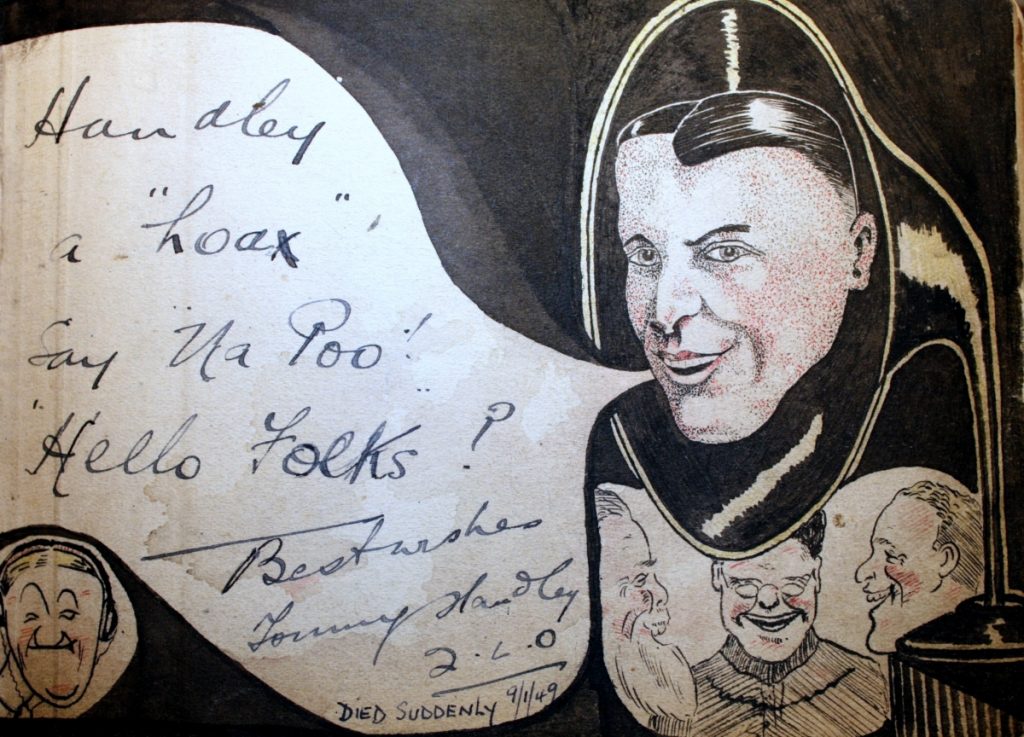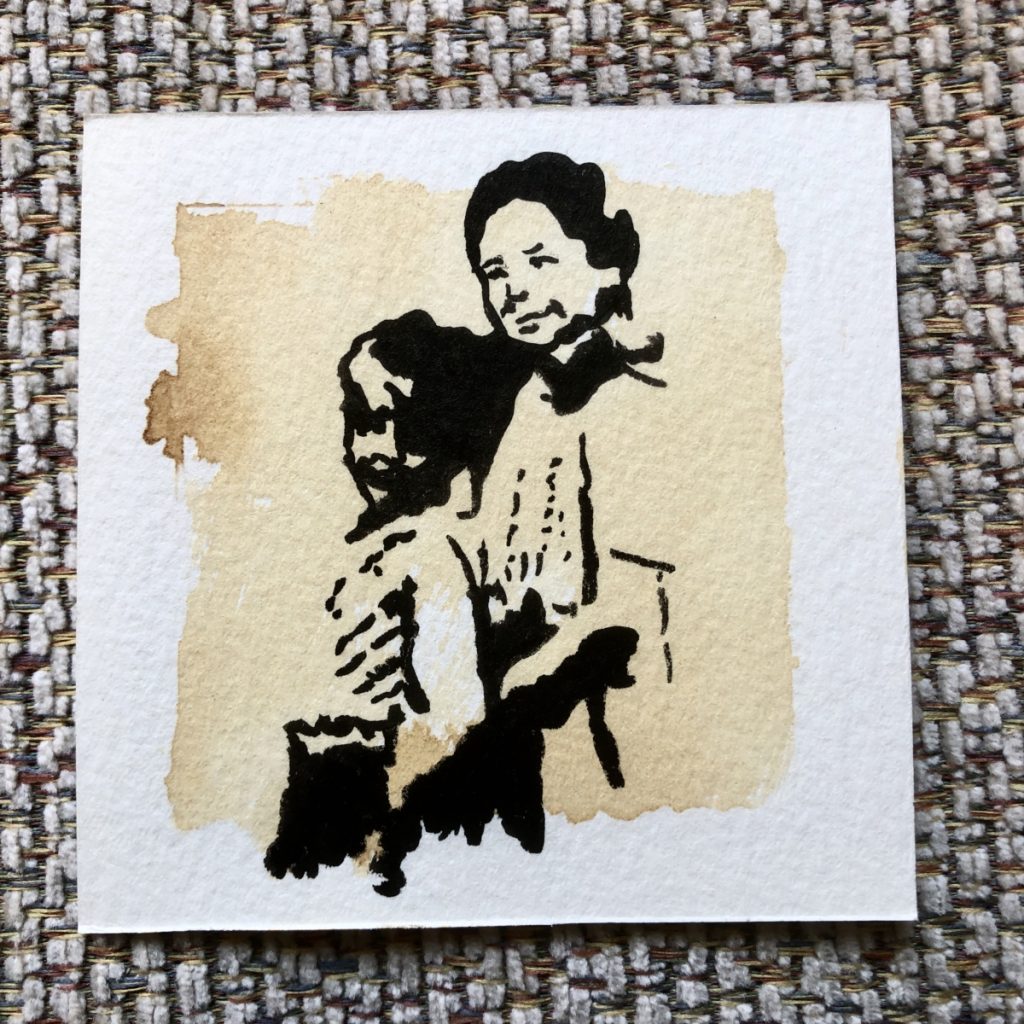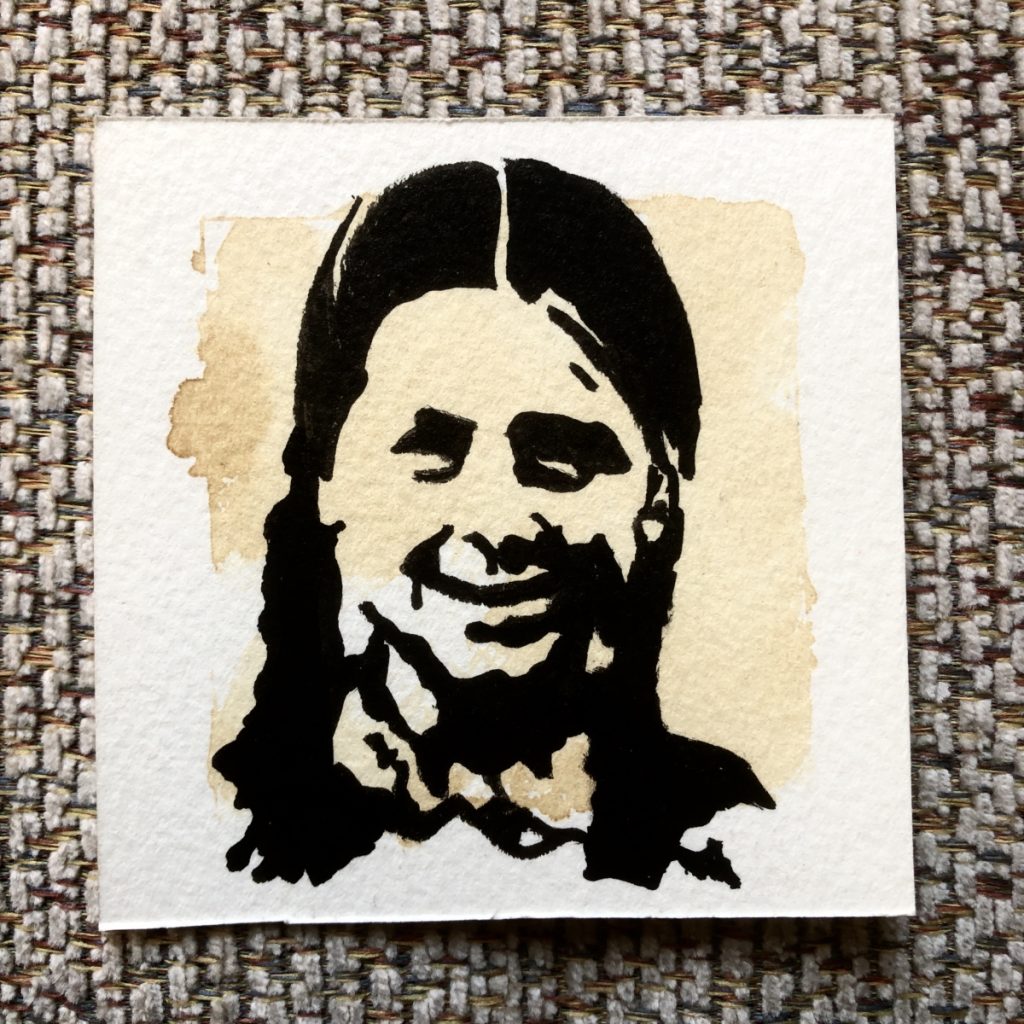The previous experiments resulted in a successful drawing style of fine liner cartoon drawings on paper burnt with milk that was looking promising as a medium and style for my final outcome. It mixed context with humour that was approaching a level of visual interest I was very happy with. The conclusion was that I had created a style that had an allegorical nature – the milk linking to the safe geographical homeliness of the village location and the cartoon drawings depicting absurd comedy and reflecting how a young mind can use humour to counter a traumatic situation.
The personal touch is very much in place with this style, however I still feel another symbolic link could be made to the past, hence I have investigated cartoonists of the early 20th century, particularly those who were on the subversive end of the spectrum. Otto Dix immediately sprang to mind, the infamous painter and print maker. It was his ink drawings that drew my attention, a sample of which are shown below. After spending time on the front line, these images came to Dix in flashes of what we know now as traumatic stress disorder. He felt compelled to show them and he held nothing back.
The quote below is pertinent and demonstrates that Dix felt that his role was effectively to document the truth and pull back the curtains of propaganda. His humour is dark and a statement on the blatant reality of the consequences of war. The Prostitute and Disabled War Veteran is particularly powerful when you realise that the scar on the face of the veteran resembles female genitalia. Very uncomfortable viewing.
Artists shouldn’t try to improve or convert. They are far too insignificant for that. They must only bear witness.
Otto Dix
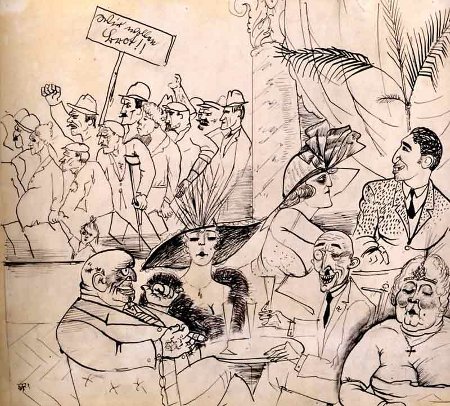
We Want Bread, Otto Dix, 1923 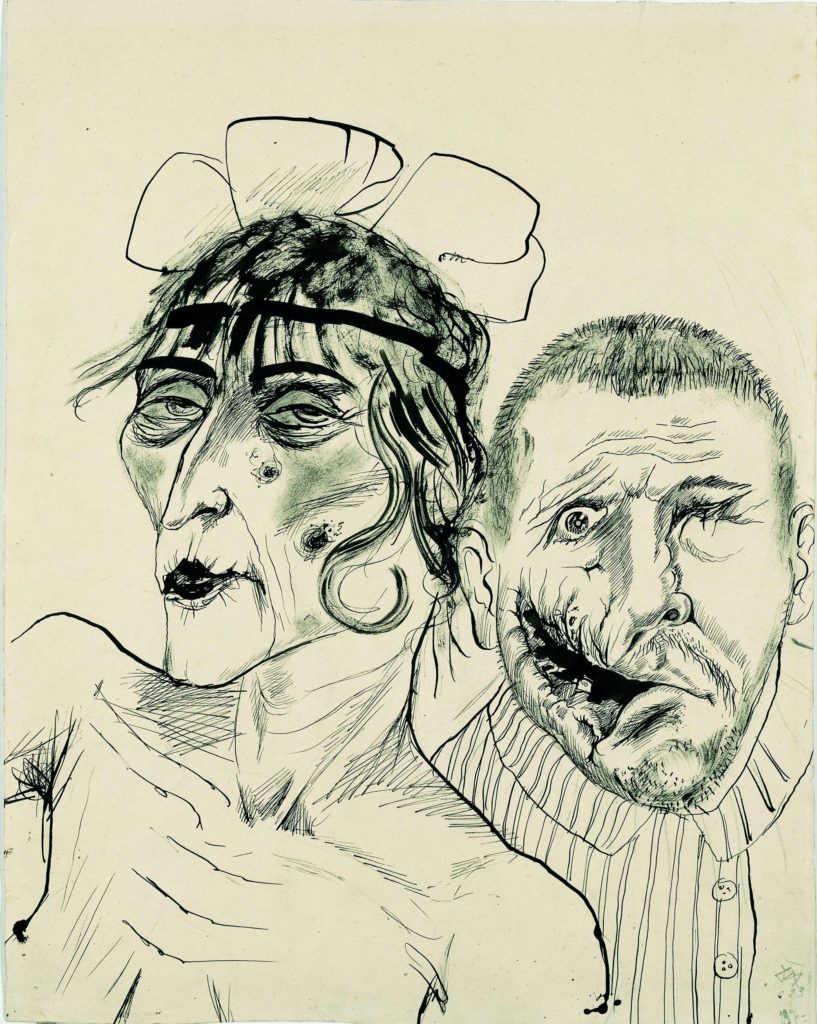
Prostitute and the Disabled War Veteran, Otto Dix, 1923
On a personal level, my maternal grandfather was an avid cartoonist and autograph collector and developed his own ink drawing style contained in a large collection of two autograph books, some samples of which are shown below. The accentuated features of these characters are particularly prominent and the style is clearly of its time. The clean lines and pure blacks I find particularly appealing as a style and when we see the handwritten notes against the drawings we get a real sense of the character of the individual.
The styles of Dix and my grandfather both avoid realism, they are caricatures but show dark and lighthearted humour respectively. They both use black Indian ink, which is an ancient drawing medium that gives an immediate historical narrative.
I wondered if it would be possible to work on a drawing style using ink that gave this historical reference – not a blatant replication of these styles but hopefully one that adds a contemporary twist. I created a couple of drawings below to test the ink on the small squares of watercolour paper burnt with milk.
The results are very appealing as the pure black contrasts very pleasingly with the milk background. I purposely took the ink drawings outside of the square of burnt milk to avoid the appearance of the image being ‘framed’ but rather that the milk had been used to colour the image. The tone of the milk showing through adds a skin tone to the drawings that is incomplete and extends out of the the picture plane which I enjoy – the skin of the individual has been peeled away to reveal their inner feelings.
I certainly prefer this style of drawing to the fine liner, not only because of the solid blacks that it allows but also these drawings seem to be more crafted than those created with fine liner. A fine liner pen can be picked up from a table and used casually but the fact we have used ink here indicates a greater level of intent on the part of the artist in the choice of materials and surely by that we give a viewer something they will take more seriously? The solid black drawings have a greater confidence as if they have been stamped on the paper as a statement of fact, not a loose sketchy style that seems to lack confidence.
The next stage will be to receive peer feedback on these ink alternatives and then create a style that acknowledges the past but adds that all important contemporary twist. To do this we need to consider a level of narrative that includes humour but also comments on the shocking impact of what happened that night.
Presentation of the outcome
Linking back to the previous post, we also considered the potential presentation of the drawings in an existing parish council notice board. Following feedback, my view is that it is largely unnecessary and adds unwelcome clutter. Many artists have a mantra of taking something away to make what remains more meaningful and I believe we have an example here. Giving the outcome a definite geographical reference point would add to much context and leave no sense of wonder or uncertainty. This will be removed from the outcome and a more subtle presentation will be considered.

